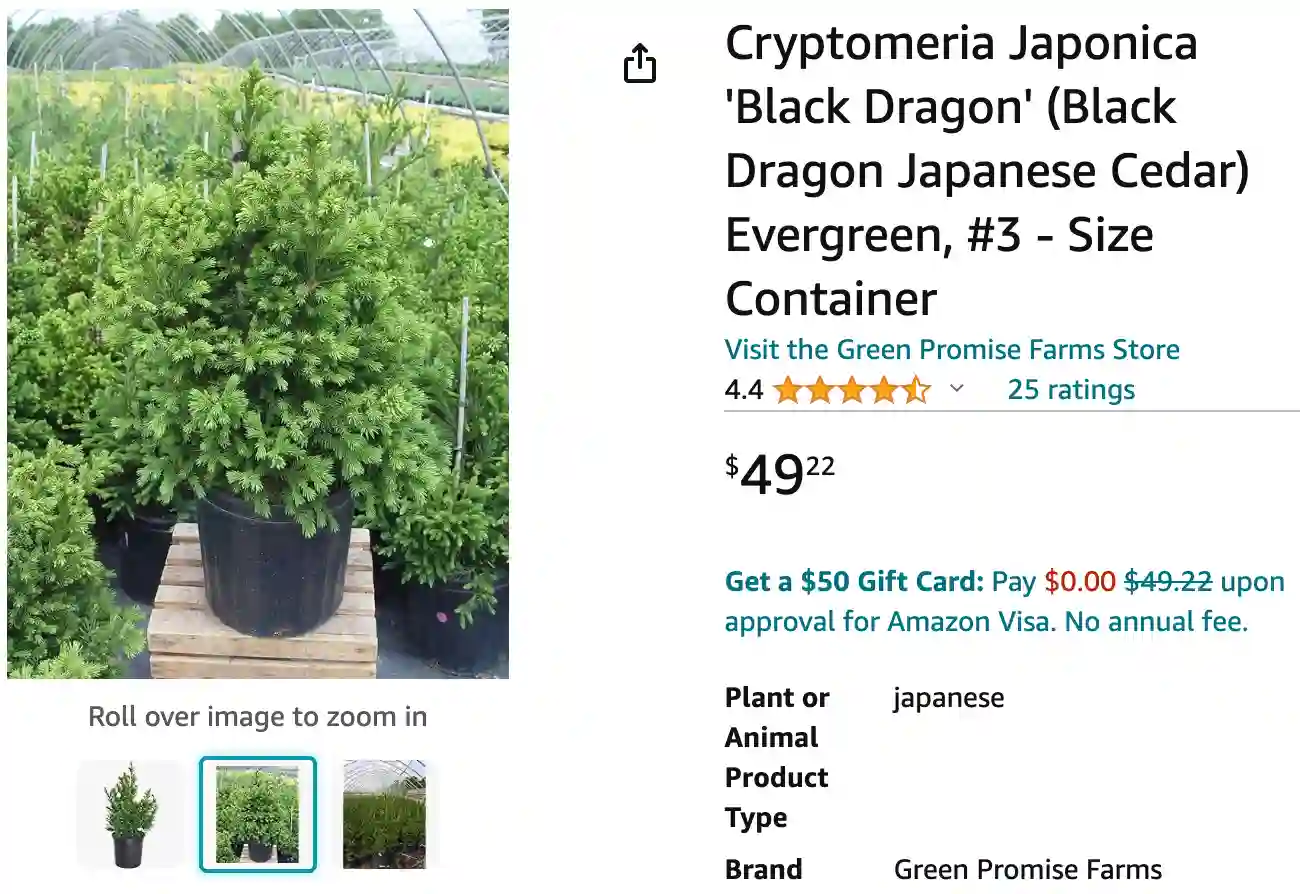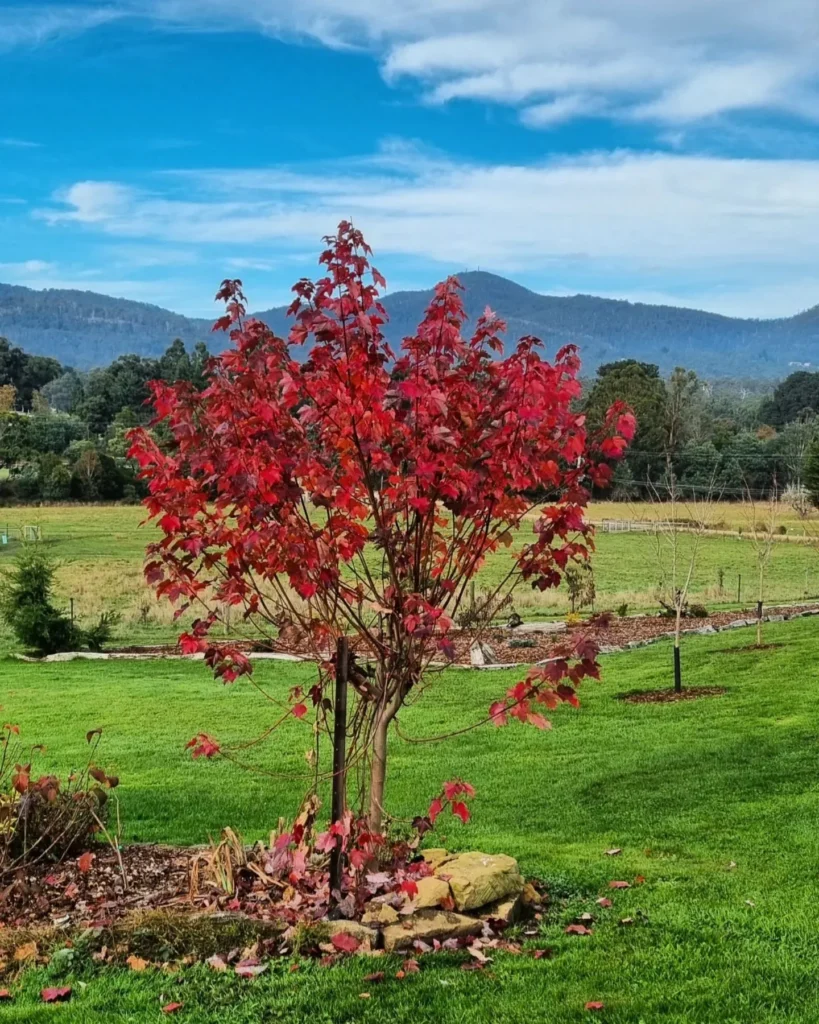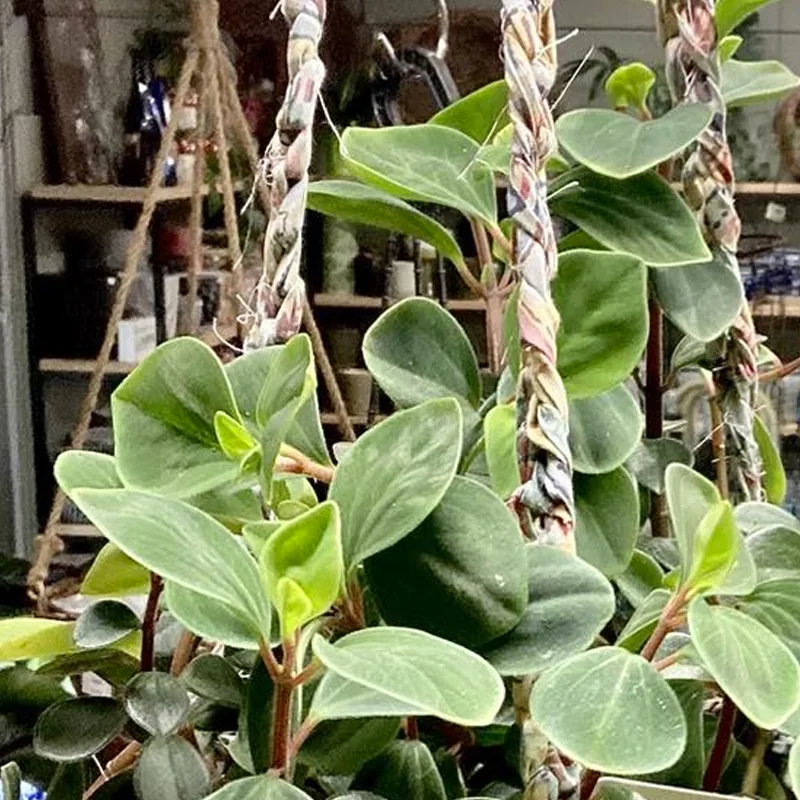
How to grow Black Dragon Cryptomeria?
Black Dragon Cryptomeria (Cryptomeria japonica ‘Black Dragon’) is a striking evergreen conifer prized for its dark foliage and graceful, pyramidal form. Here’s how to grow Black Dragon Cryptomeria:
1. Light:
- Full Sun to Partial Shade: Plant your Black Dragon Cryptomeria in a location with full sun to partial shade. It can tolerate some shade but prefers at least 6 hours of sunlight per day for optimal growth and coloration.
2. Soil:
- Well-Draining Soil: Ensure the soil is well-draining, as Cryptomeria doesn’t like to sit in waterlogged soil. A slightly acidic to neutral pH is ideal. Amending heavy clay soils with organic matter like compost can improve drainage and soil texture.
3. Watering:
- Regular Watering: Water your Black Dragon Cryptomeria regularly, especially during the first growing season to establish a strong root system. Once established, it is moderately drought-tolerant but benefits from occasional deep watering during dry periods.
4. Mulching:
- Mulch Application: Apply a 2-3 inch layer of organic mulch, such as wood chips or bark, around the base of the plant to conserve soil moisture, suppress weeds, and regulate soil temperature. Keep the mulch a few inches away from the trunk to prevent rot.
5. Fertilizing:
- Fertilizer Application: Feed your Black Dragon Cryptomeria with a balanced, slow-release fertilizer in early spring before new growth begins. Follow the manufacturer’s instructions for application rates. Avoid excessive fertilization, as it can lead to leggy growth.
6. Pruning:
- Minimal Pruning: Black Dragon Cryptomeria typically requires minimal pruning. You can remove any dead, damaged, or overcrowded branches as needed to maintain its shape and appearance. Avoid heavy pruning, as this can disrupt its natural growth habit.
7. Winter Protection:
- Cold Hardy: Black Dragon Cryptomeria is cold hardy but may benefit from winter protection in areas with harsh winters. Apply a thick layer of mulch around the base of the plant to insulate the roots and protect them from freezing temperatures.
8. Pests and Diseases:
- Pest Management: Watch for common pests such as aphids, spider mites, and scale insects. Treat infestations promptly with insecticidal soap or neem oil.
- Disease Prevention: Ensure good air circulation around the plant to prevent fungal diseases such as root rot and needle blight. Avoid overhead watering, and promptly remove any diseased foliage.
9. Container Growing (Optional):
- Container Planting: Black Dragon Cryptomeria can be grown in containers on patios or balconies. Choose a large container with drainage holes and fill it with well-draining potting mix. Water regularly and fertilize as needed during the growing season.
How to prune Black Dragon Cryptomeria?
Pruning my Black Dragon Cryptomeria is a delicate dance between shaping its elegant form and maintaining its natural beauty. I’ve found that trimming back any dead or damaged branches in late winter or early spring helps promote healthy growth and maintains its striking appearance. However, I try not to over-prune, as Cryptomerias tend to resent heavy pruning and may not recover well.
Does Black Dragon Cryptomeria have problems?
In my experience, Black Dragon Cryptomerias are relatively low-maintenance and resilient plants. However, like any living thing, they can encounter issues from time to time. One common problem I’ve noticed is the susceptibility to spider mites, especially in dry or hot conditions. Regular inspection and early intervention with insecticidal soap or neem oil can help prevent infestations from getting out of control.
What happens to Black Dragon Cryptomeria when you top them?
When it comes to topping Black Dragon Cryptomerias, I’ve learned the hard way that it’s best avoided. Topping can lead to a host of issues, including weak growth, dieback, and an overall unhealthy appearance. Instead, I focus on selective pruning to maintain its natural shape and encourage upward growth from the main trunk.
Where to buy a Cryptomeria Black Dragon?
Finding a Cryptomeria Black Dragon can sometimes be a bit of a treasure hunt, but I’ve had luck sourcing them from reputable local nurseries and specialty garden centers. Additionally, online plant retailers and botanical gardens may offer these unique cultivars. I always recommend checking the reputation of the seller and inspecting the plant in person if possible to ensure you’re getting a healthy specimen.
If i die, water my plants!



